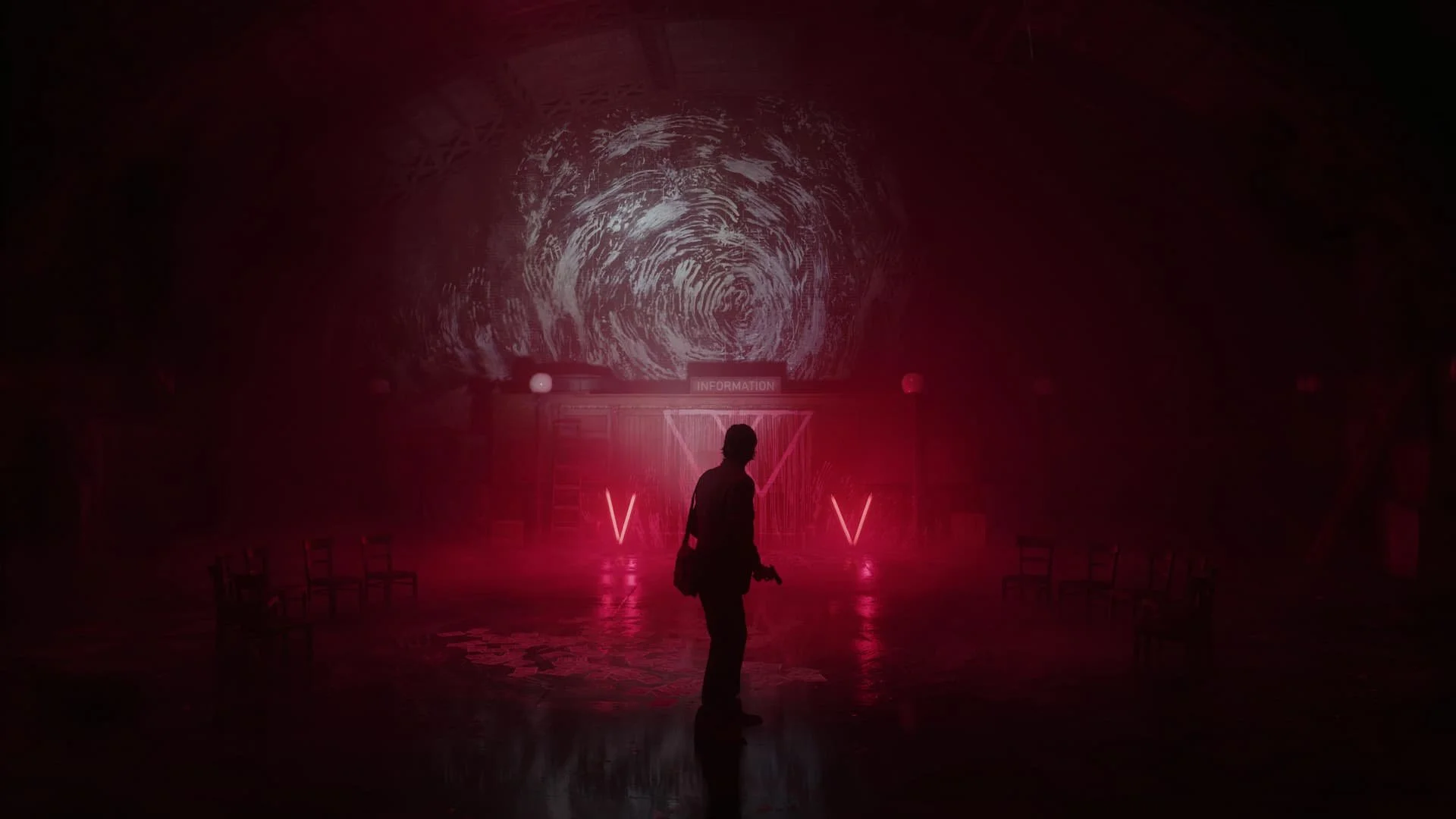Alan Wake 2 Delights
The dark place is spooky.
Alan Wake has always been a strange game and a stranger franchise. Hugely inspired by Twin Peaks, it has never shied away from wearing its influences on its sleeve, taking elements and twisting them for its own distinct purpose. The first game in 2010 ended on a cliffhanger with its protagonist, the titular writer Alan Wake, trapping himself inside a dark dimension centralized in a deep lake so that his wife could escape it. There was a short Xbox Live Arcade game (Alan Wake’s American Nightmare in 2012) and the character was referenced in Remedy’s following games, Quantum Break in 2016 and Control in 2019, reminding players that Wake was still trapped there in the dark place. As the third season of Twin Peaks allowed the 25 year break to occur in universe, so here did thirteen years pass in the town of Bright Falls. Players of the original have been wondering- How’s Annie Alan?
The game wisely doesn’t expect most of its players have played the original, and naturally recounts the events of the first game in an organic way. The narrative recap is aided by the welcome addition of the games second protagonist, Saga Anderson, an FBI agent who with her partner come to the town of Bright Falls to investigate a chain of ritualistic murders and disappearances they believe may be related to Wake’s disappearance in 2010. I’d be remiss to not mention that Saga’s partner is none other than Alex Casey, who fans will recognize as the previously fictional protagonist of Wake’s bestselling detective series. On the drive into Bright Falls, Anderson and Casey discuss Casey’s irritation with people drawing comparisons between him and the fictional character Wake created who shares his name, job, and general demeanor. It only gets stranger from there.
The game has a dual narrative, where players can switch between the stories of Wake and Anderson at designated points in the campaign, with both stories requiring completion before the climactic finale can be played. Anderson’s story occurs in the real world while she gathers clues to solve her mystery in the forested pacific northwestern towns of Bright Falls and Watery. She wanders through abandoned areas while fog drifts through rays of light from the tall trees and forest foliage that surround her. Wake meanwhile works to escape the dark place, which takes the form of a grimy, ever shifting urban nightmare of New York, where neon signs and street lights feel like the only salvation from a never ending night where trash covers the street and graffiti coats every well.
Saga Anderson, on the case, in her killer sweater.
Switching between these campaigns feels invigorating, as they operate on different rules and presents different dangers; they can sometimes feel like different games altogether. The stories and environments contrast each other very well. The campaigns overlap in interesting ways that relay information to players in chilling moments, where the player recognizes an element from the other campaign, but the characters are unaware of its significance. It’s one of the many ways Remedy keeps the game unfamiliar and surprising as it progresses- I rarely felt safe or comfortable throughout the game.
The game is supremely effective in creating dread. Moments of action can be sparse, and those expecting a combat heavy experience may be disappointed. The story and atmosphere of Alan Wake II, however, provided me with one of the more memorable gaming experiences I’ve encountered.
Though it’s labeled as a survival horror game, the focus on psychological horror and narrative makes it somewhat of an outlier in the genre. You’ll still work on managing your resources in a Resident Evil styled inventory system, and the combat can be quite punishing if you aren’t careful. Where in the first game you were regularly killing large groups of Taken (enemies infected with the dark presence) the sequel takes a less is more approach- I was sometimes overwhelmed by just 3 or 4 Taken if I wasn’t careful. There are puzzles throughout that are consistently just challenging enough that you feel great when you solve them, but not too challenging that it got frustrating and I had to look up solutions.
The game’s number one priority is telling its story and telling it well. It uses an interesting and experimental amalgamation of literature, live action footage, and traditional gameplay in unique ways that blend the three mediums together in a way quite unlike any other game.
It’s not often a game looks this good, has gameplay this engaging, and a story that is interesting and unpredictable on top of that. The story in various properties today can sometimes feel like the weakest element of something, across video games, movies, or TV shows, where something was funny, or the action was well choreographed, or it was a technical marvel, but the story was a little lacking.
It is hugely refreshing to have the narrative be the driving force behind this game, and delivered in such an experimental and unusual way. There’s several original songs with lyrics relevant to the lore that play between chapters or in game, a complete short film which was actually quite good, several live action videos and cutscenes, and of course the manuscript pages that can feel like short pieces of flash fiction. It’s been a remarkably good year for video game releases, and this is among the best that the year has to offer.

